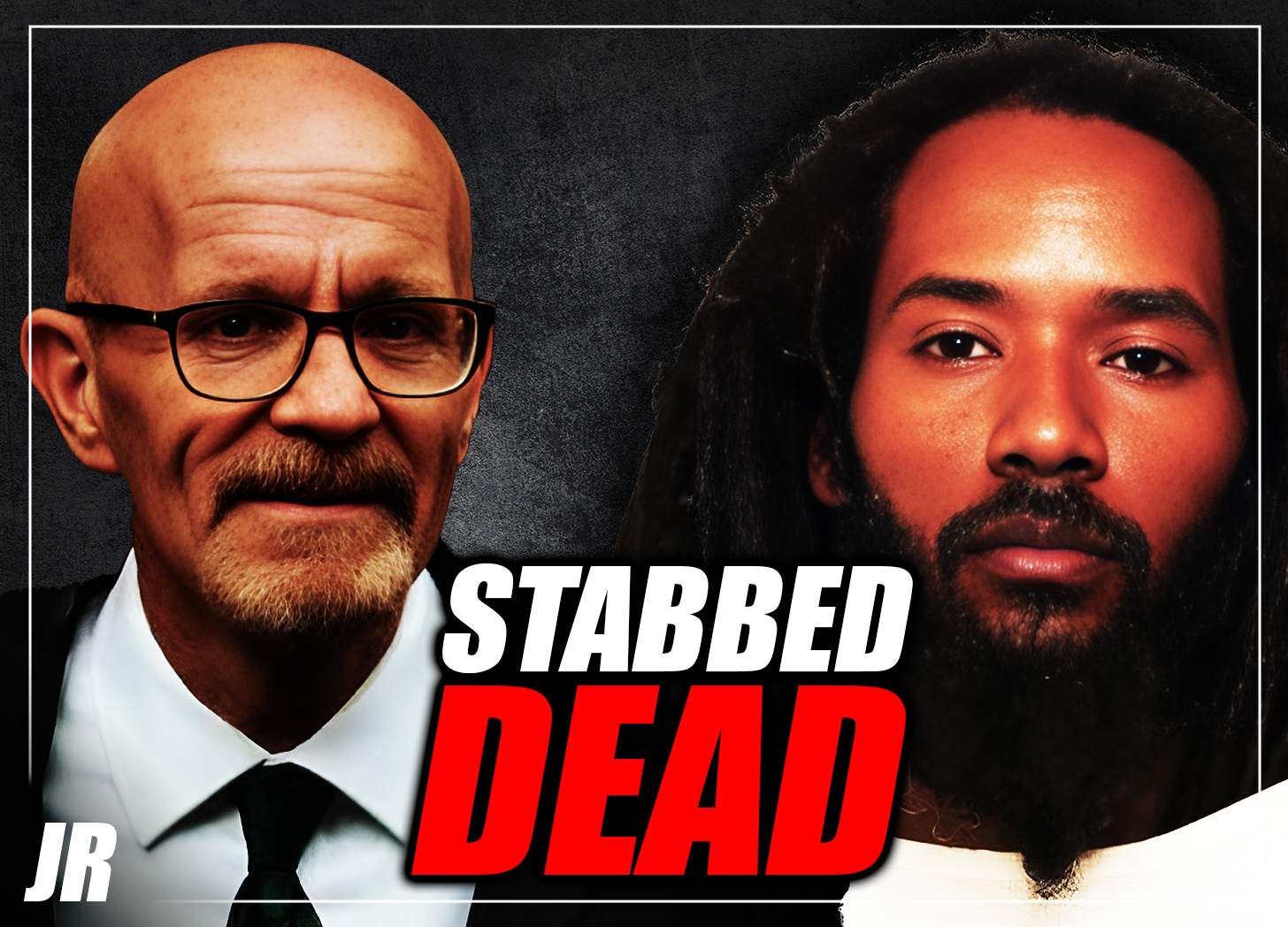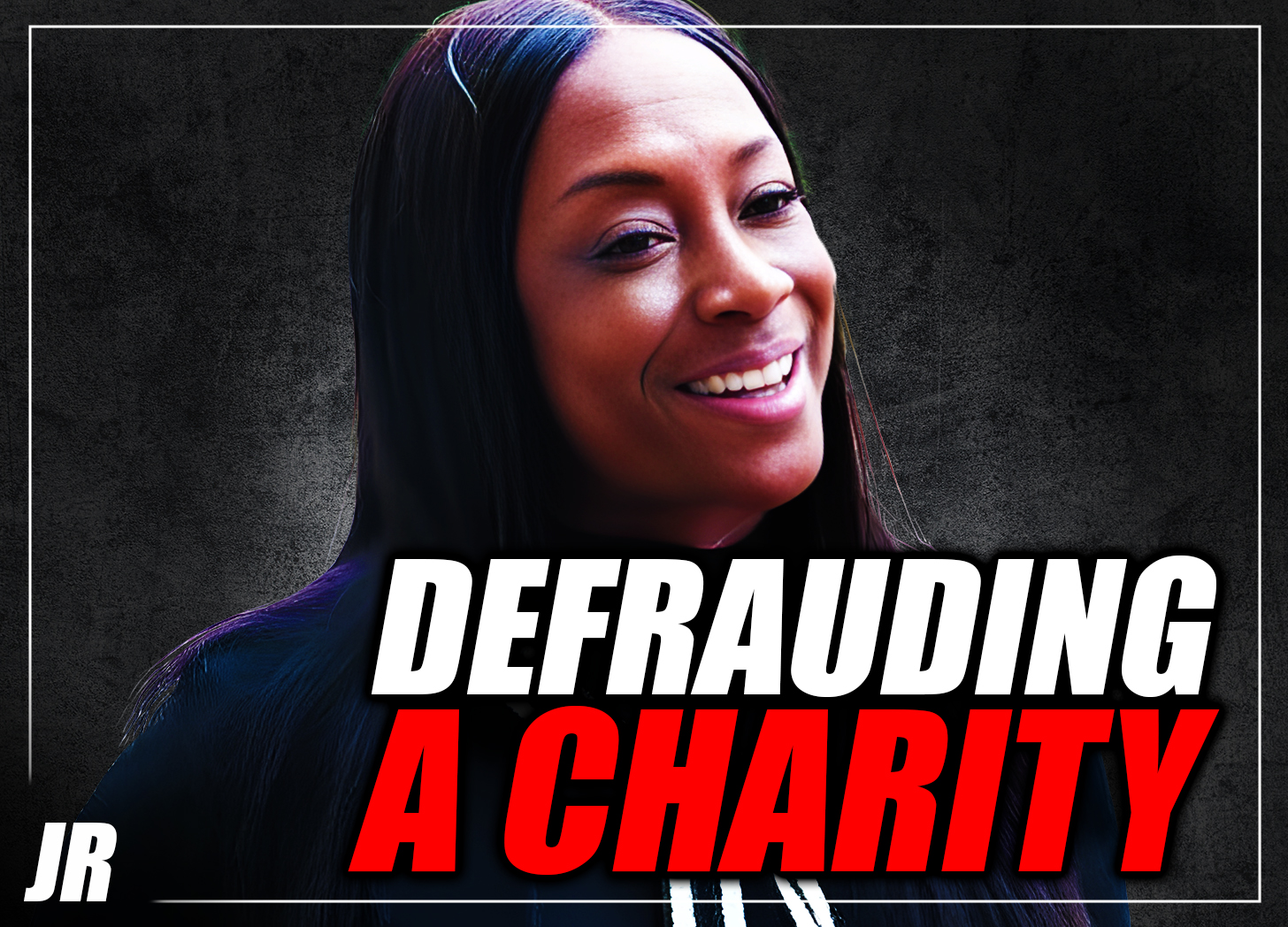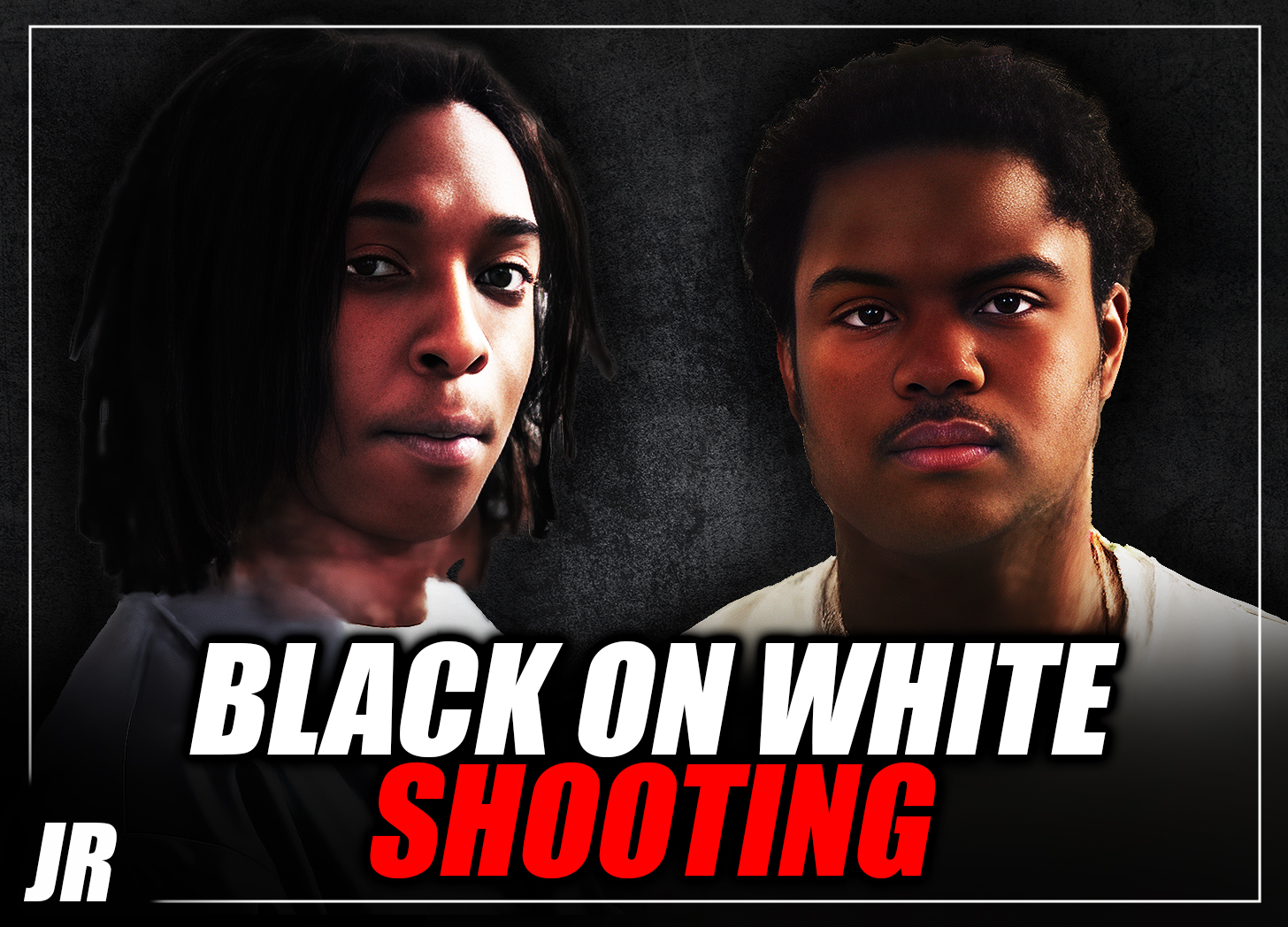By SAM CALDWELL and TREY GARRISON
Waukesha, WI – On the eighth day of the trial of the accused anti-White terrorist Darrell E. Brooks, the court continued to hear the testimony of victims and professionals with ties to the incident.
Aside from Waukesha County medical examiners and police professionals in charge of cultivating evidence regarding the injuries sustained by those who died, the court was also subjected to a shockingly long 50-minute outburst by Brooks, which dominated a significant portion of the trial.
During the rant, filled with his usual sovereign citizen-inspired mewlings about facing his accuser and “subject matter jurisdiction,” Brooks demanded to know if he was in a common law court or an admiralty court and wondered if Judge Dorow ruled with “full military power.”
He also claimed that the Judge was committing treason for refusing to engage with his many, often overruled, objections. He even asked that the case be dismissed and that the Judge recuse herself from the case, implying corruption, bias, and mentioning hate being directed at his family in the form of online comments.

Brooks, a black career criminal and a registered sex offender, is charged with intentionally driving his SUV through the annual Waukesha Christmas Parade on Nov. 21, 2021, striking dozens of White spectators and participants.
Six White people were killed, and 61 were injured and maimed as the self-described anti-White terrorist accelerated into the barricaded parade route and veered into crowds for five blocks.
The state’s more than 70 felony charges against Brooks include six counts of first-degree intentional homicide with a dangerous weapon, 61 counts of recklessly endangering safety with a dangerous weapon, six counts of hit-and-run involving death, and two counts of bail jumping.
The prosecution has still not mentioned or questioned Brooks’ extensive, documented history of anti-White statements and hate, which preceded the terror attack on the Waukesha Christmas parade.
First Witness: Laura Thein

The state’s first witness was Laura Thein, a member of the Dancing Grannies for eight years. Her husband drove the vehicle that tailed the group, playing music for them. Thein’s testimony first mentioned that the late Virginia Sorenson—nicknamed “Ginny”—was a banner carrier for the group.
Brooks was consistently more confrontational than in previous days, constantly interrupting and objecting while speaking over Thein and other members of the court. He frequently asked for judicial determinations and demanded that Judge Dorow properly address his questions of “grounds?”
Between objections, Thein identified Ginny and all the other dancing grannies who were victimized. “Ginny was the glue. She was close to everybody, and we were like sisters…Ginny was always there.”
Thein testified that she didn’t see anyone get hit and that she was still dancing at the time of the attack.
“I knew if he was going down the center of the parade route, he was going to hit a lot of people. And he wasn’t going slow.”
Laura Thein, Dancing Granny
Due to her position directly in front of the music vehicle, Thein stated she was never hit, as the red SUV would have had to go through the truck, which provided her cover.
Thein then testified that her two friends “Ginny” and “Lee” were killed instantly from being struck by the red SUV. After the collision, Thein claimed, “All I could see were bodies. It was like I was in a war. I was in shock and grabbed my jacket and went to each body to see who it was and see if I could help.”
She testified that Betty had two skull fractures, and people urged her not to move or talk to prevent the injuries from worsening. Bill Hospel was lying on the sidewalk after he was hit. His wife, Lola Hospel, ran to him and placed a blanket over him. She remembered he died during surgery at a later time.
Sickeningly, Brooks attempted to leverage the innocence of the elderly woman by objecting several times whenever information had to be clarified due to her age, inability to grasp procedural concepts quickly, or having to be repeated due to her hard of hearing.
During cross-examination, Brooks began asking Thein to clarify who she meant by saying the word “he” during testimony, once again attempting to cast doubt on who the perpetrator of the attack was. He tried to undermine witness testimony by asking her how she could know for sure when people “died instantly,” Thein answered that based on the actions of first responders in the area, all the deaths were assumed.
“They had the heart machine on Ginny and blood was pouring out of her mouth. That’s how I knew she was gone.”
Laura Thein, Dancing Granny
Legal Bickering
After a brief argument with the judge and multiple warnings issued, Judge Dorow dismissed the witness and jury to address Brooks’ behavior and his continued attempts to make legal arguments in court while the jury was present.
During this break, she once again dedicated time to explaining to Brooks how the process worked and that the warnings she had given him thus far were all mere courtesies. She also stated that she might stop doing so going forward. This raises the question of why she had been giving Brooks so many courtesies thus far despite his repeated acts of bad behavior and disregard for legal procedure.

As the jury was being introduced, Brooks asked for an affidavit from the judge, in which she swore that she had no personal interest in the outcome of the case. She also asked if this court was under military jurisdiction. He questioned whether it was a common law or an admiralty court, further exemplifying his lack of understanding of the nature and cause of his charges.
He claimed his Sixth Amendment rights were still being violated, saying that none of his requests for information were ever provided, and finally asked if the judge had “full military power.”
In an incredibly rich demand, he moved for the case to be dismissed until he could “see” the plaintiff. He claimed that Judge Jennifer Dorow should recuse herself for going against her “oath” and that his rights were being trampled on despite being accused of mowing down dozens of White people in an alleged terror attack.
Brooks implied that the judge was corrupt, had a biased stance in the case, and claimed that she knew people and had “personal relationships” with individuals close to the case due to knowing the father of one of the victims.
The 50-Minute Sovereign Citizen Rant
He then went on a 50-minute sovereign citizen-inspired rant, completely uncontested by anyone in the courtroom. He claimed that because his name was in capital letters on the docket, it somehow indicated he was merely a third party in the matter and, therefore, legally incorrect.
Brooks even went so far as to accuse the judge of committing treason for not upholding her oath of office. He claimed that he was not afforded sufficient “legal assistance” despite waving his right to an attorney and stated that all contracts he made could be altered if he no longer agreed to the terms.
He also stated that due to being in lockdown many hours a day, he did not have the privilege to file forms and prepare as he wanted to, appending that the court is—of course—biased against him.
Brooks addressed the CourtTV Livestream comment section and Facebook groups covering the trial, complaining that they have been insensitive to him. He said everyone must think of his family and his loved ones who are being harassed and inconvenienced by them. He said his children were being bullied and that his family had been receiving hate mail.

He implied that the terror accusation was insensitive and untrue and that a change of venue should have been made due to the connections and proximity to those affected. This was a clear attempt to begin angling for a mistrial which was then denied.
The prosecutor then had a chance to respond and unloaded on Brooks, detailing other past cases that have labeled all of his sovereign citizen arguments to be nothing more than “legal mumbo jumbo.”
“Mr. Brooks knowingly, willingly, voluntarily, and intelligently, insisted on representing himself at this trial.”
Prosecutor Sue Opper
The prosecutor stated that Brooks was operating off of the notes prepared for him by the public defender before they were dismissed and claimed he was adequately prepared for the case. She noted that most of what he said in court, aside from his bizarre interjections, were, in fact, read straight from those documents.
Finally, Judge Dorow had her turn to speak and made it clear the jury was indeed fair and impartial and that all of his allegations were baseless with no root in law or fact. She told him his rights were not unfettered and that he had best cease with the frivolous objections.
Second Witness: Hope Evans Jansen

The next witness called was Hope Evans Janes, a mother who attended the parade with her family as spectators. Her daughter, age 10, was able to provide Waukesha police with a recording of the entire parade on her iPhone. The video was a piece of key evidence for the case against Brooks, and the prosecution confirmed that not even Jansen’s family had seen the video themselves.
Brooks’s cross-examination contained the usual inane questions, and other than asking if the parade was “loud,” nothing of note in particular occurred.
Third Witness: Trooper Michael Smith

The next witness was Wisconsin State Patrol Trooper Michael Smith. Smith indicated that he has served as a trooper since 2000 and now acts as a crash reconstruction analyst. He obtained the position after completing 2000 hours of advanced training at various at multiple academies and colleges, and using his expertise, he was able to complete the crash reconstruction for the Waukesha parade attack.
Smith went on to explain his methods for reconstruction. Using a test vehicle and two stationary cameras—which can recreate accidents with 99% accuracy—his agency was able to calculate the speed of the red SUV at an average of 32 mph at the time of the attack.
Smith also clarified that the weight of a red Ford Escape, off of the assembly line, came out to approximately 3,068 lbs. All of his work was peer-reviewed for the utmost accuracy.
During cross-examination, Brooks went on to make a bizarre request that Trooper Smith explain to the court the concept of Newton’s Law. “It’s something we all learned in high school,” he replied.
Fourth Witness: Dr. Amy Sheil

The next witness was Dr. Amy Shiel, Waukesha County associate medical examiner and the professional in charge of determining the cause of death for LeAnna Owen, Virginia Sorenson, and Jackson Sparks.
During direct, she explained that she had been working as a medical examiner for seven and a half years. For the trial, she prepared several diagrams highlighting the various injuries sustained by all of the victims she had worked on. Using color codes, the jury could clearly see who suffered, what, where, and at what severity.
The most heartwrenching testimony, however, came when she was delivering a rundown of her autopsy of eight-year-old Jackson Sparks. She was able to explain to the court with grim neutrality that the reason Sparks’s autopsy occurred days after the attack was because he was technically still alive, albeit braid dead, and kept on life support long enough for his organs to be properly harvested as he was a registered organ donor.

While describing the gruesome details of Jackson’s injuries, Shiel fought back tears but eventually broke down, overwhelmed with emotion. Jackson’s head had been essentially severed from the rest of his body; his spinal cord ripped violently away from his brain. He ultimately succumbed to hemorrhaging, she testified.
When it was Brooks’ turn for cross-examination, he appeared flustered and demoralized, taking long periods for himself before asking any questions.
rom behind a bleu covid mask, he appeared to be holding back tears himself, although the sincerity of his emotional pause was questionable and seemed to lack any real merit. He then spoke quietly while keeping his head down and appeared to struggle asking questions.
Once he was done, he asked for a moment, and Judge Dorow began a 10-minute recess.
Fifth Witness: Dr. Lynda Biedrzycki

Next up was Dr. Lynda Biedrzycki, the Waukesha County medical examiner in charge of determining the cause of death for Tamara Durand, Jane Kulich. and Wilhelm Hospel. With 25 years of experience, her credentials were highlighted during direct examination, and she, like Shiel, spoke with a very direct, professional tone despite the emotional subject matter.
Biedrzycki testified that the injuries of Kulich, Hospel, and Durand were numerous, and all had suffered multiple blunt-force trauma, but clarified that “each area of injury was quite severe in and of itself.” Many, if not all, of their injuries could have proven fatal all by themselves.
She also claimed the speed of the SUV would need to be “considerable” considering the injuries that were sustained. At one point, she was even given access to the red SUV to take pictures and measurements, assisting with her findings on the victims.
During cross-examination, Brooks asked why she would need to see a vehicle if her expertise was in the medical field. She explained that it’s essential to match injuries with the implement suspected of being used to make educated conclusions.
Sixth Witness: Matthew Widder

The next witness was Matthew Widder, a Catholic priest participating in the parade with a group of marchers belonging to the Catholic Community of Waukesha.
After giving a detailed rundown of every member attending that day through a photograph, he testified that he heard the sound of a scream. After turning left to see what it was, he saw the red SUV collide with two individuals, with a “smack” after each one.
He testified that although his mind had blacked out a lot of what went on that day, he could confirm that he never saw the driver as the car was “going faster than I would see a car driving in normal times on that street.” He ultimately tended to three people in his nearest vicinity and went to the hospital with Father Patrick Heppe, one of the individuals who was struck.

During cross-examination, Brooks once again attempted his sovereign citizen ramblings, asking Widder if he considered himself an injured party in the case. When Widder said he was not, Brooks continued, asking how he could testify on behalf of an injured party if he weren’t one himself. He also continued his trend of asking witnesses if they knew who the plaintiff was. Brooks abandoned these lines of questioning after being pressed by Judge Dorow.
After Widder was dismissed, Judge Dorow excused the jury for a comfort break but then scolded Brooks as he tried to interrupt the decision.
“Mr. Brooks, not now. Not now. The jury is in this courtroom, and you will show respect for them and this court…Mr. Brooks, stop. I’m putting you on notice that you are on the verge of this court creating a curative direction on your frivolous arguments… That is why your questions are being objected to.”
Judge Jennifer Dorow to Darrell Brooks, October 13th 2022
Brooks continued to demand that Judge Dorow prove that his arguments were frivolous. Dorow walked off and said, “We’re in recess.” Brooks could still be seen shouting as the livestream continued.
When the jury was brought back inside the courtroom, Dorow ordered them to disregard Brooks’ sovereign citizen antics as a misinterpretation of the law.” Brooks replied, “They absolutely are not.”
Seventh Witness: Lukas Hallmark

The next witness called to testify was Lukas Hallmark, a Waukesha police detective who was also marching with the Catholic Community of Waukesha along with his wife and four children aged 3,5,7, and 9.
He testified that as he saw the red SUV barrelling towards them, he estimated its speed at around 30-40mph in a 25 mph zone. As the vehicle drove by, he claimed his foot was run over, and his young sons sustained injuries but survived.
When he arrived at the hospital to get treatment for his children, Hallmark said, “I’ve never seen anything like this in my entire life. It was pretty much chaos. When we first got to the hospital, there was some sort of physician or EMT triaging individuals with what I believe was a permanent marker on their forehead… We were directed into the waiting room, and at that point, we were still on stretchers or backboards, just waiting until we could be tended to by some of the staff…”
Interestingly enough, Hallmark testified to what many people believe, that the Waukesha Christmas Parade was the scene of a terrorist attack.
“After the vehicle had come through and struck our group, and then as I looked back at all the kind of carnage behind us, my thought was that we were involved in some sort of terrorist attack. Overwhelming fear, overwhelming panic… in downtown Waukesha,”
Waukesha Police Detective Lukas Hallmark
During cross-examination, Brooks attempted to cast doubt on the witness testimony by asking Hallmark if he had seen the videos of the attack before taking the stand, implying bias. Hallmark admitted that he did, but his first-hand experiences at the parade were still so vivid that he was able to positively identify individuals in the video without having seen it at all.
“I came to that conclusion because I remember being there that night,” said Hallmark.

The Justice Report will continue to provide daily coverage of the trial.
For background on Brooks and his alleged anti-White crimes, read a summary by Justice Report. To view the National Justice Party/Media2Rise documentary on Brooks and the Waukesha attack, click here.
Have a story? Please forward any tips or leads to the editors at [email protected]





















